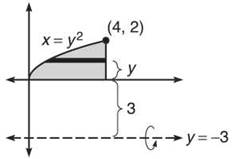

When that happens, we end up with concentric cylindrical shells hence, the name of this method. In the shell method, the slices are obtained by cutting through the solid that is perpendicular to the axis of rotation. The shell method, however, requires a unique way of slicing the solid. This results in slabs that are cylindrical in shape or as we have learned in the past are shaped like disks or washers.
WASHERS AND DISK GRAPH AND SHELLS HOW TO
In the past, we’ve learned how to approximate the volume by cutting it into “slices” perpendicular to the axis of rotation. The shell method allows us to calculate the volume of the solid of revolution of regions that are challenging to calculate using the dish or washer method. We’ll also do a quick comparison of the similarities and differences shared between the shell method and the two previous methods we’ve learned in the past.įor now, let’s understand what makes this technique unique and learn when it’s the best time to apply this method. We’ll show you how to revolve a region under the curve and region bounded between two curves using the shell method. After this article, we can now add the shell method in our integrating tools. In the past, we’ve learned how to calculate the volume of the solids of revolution using the disk and washer methods. In the cylindrical shell method, we utilize the cylindrical shell formed by cutting the cross-sectional slice parallel to the axis of rotation. There are instances when it’s difficult for us to calculate the solid’s volume using the disk or washer method this where techniques such as the shell method enter.

The shell method is an alternative way for us to find the volume of a solid of revolution.

Shell Method -Definition, Formula, and Volume of Solids


 0 kommentar(er)
0 kommentar(er)
